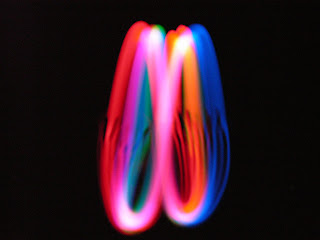


my blog for ART 308


 about juggling).
about juggling). entranced by his attempts to create shapes with balls thrown in the air. the work to the right, from 1974, is entitled Throwing four balls in the air to get a square ( best of 36 tries ). during an interview, Baldessari explained a little bit about this type of artwork.
entranced by his attempts to create shapes with balls thrown in the air. the work to the right, from 1974, is entitled Throwing four balls in the air to get a square ( best of 36 tries ). during an interview, Baldessari explained a little bit about this type of artwork.For me, this is one of the truest quotes concerning installation art that I have ever read. Everyone can relate to that joke…the joke that the teller thinks is so funny, but no one else really gets it. Installation art is the joke that you had to be there to get,
Bishop talks about the word installation, let’s think about the root – install. From dictionary.com “to establish in an office, position, or place.” So does this mean that any art that is established in a particular place is installation art? A set of paintings? A display of photographs? Or perhaps we are more specific and limit it only to items that are permanently installed somewhere, and that can not be easily moved, for example Maria’s Earth Room.
But Bishop then goes on to talk about interactivity between installation pieces and their viewers. If we start to consider interactivity as a requirement then either the viewer must influence the artwork as with Chris Coleman’s Spatiodynamic, in which the viewer is the input for the landscape that is formed, or the viewer must be changed by the piece interacting with him or her.
I feel that this is simply another discussion of “what is art to you?” To some, installation art is any semi-permanent, well, installation. To others, there needs to be some sort of interaction; perhaps between the art and the space its in, or the art and its viewers, and the viewers and the space.
Maybe the key, as Bishop suggests, is simply that you have to be there.So who knows? I sure as heck don’t.

Amour Platonicien
The nature of the Platonic ideal of love, which from its origin was that of a chaste but passionate love, based not on un-interest but virtuous restraint of sexual desire.
Platonic relationships – can they really exist? Can two people, whom given the opportunity to be attracted to each other, be companions without that attraction affecting their interaction? My box explores the transformations that happen to a relationship as feelings develop between two people. Starting with the most basic platonic shape, the tetrahedron with four facets, the relationship is a simple one of formal acknowledgement. As the relationship progresses through the platonic solids, it becomes more complicated; more facets are introduced, and the color changes from a neutral white, to a passionate red. As the box moves towards the icosahedron it visits increasingly complicated shapes which represent the two people as they move from a relationship of friendship to one of attraction and affection.